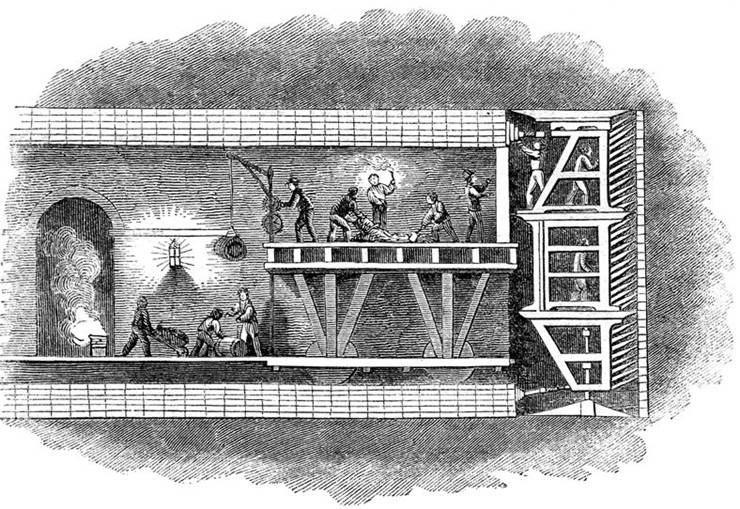Undersea Tunnel - History of Underwater Tunnels
From the first moment when first underground passageways for passengers and vehicles started being built, the engineers started thinking about tackling the problem of digging long enough and stable enough tunnels that can go below rivers or even seabeds and connect traffic points without using bridges.
The expertise for building train tunnels was established in 19th century England, first for coal mining and then and then for building first underground passages of London subway network. The first tunnel ever built was located in 1855 in Kibblesworth, created as a test study for London Underground. Network. As English engineers started gaining experience, they soon tackled the problem of connecting industrial dock areas of north London with South London.

However, building an expensive bridge elevated very high from water was not possible because of the busy river shipping schedule. So, an alternative had to be found. Between 1825 and 1843 a railway tunnel was dug between 1825 and 1843 using brand new “tunneling shield” technology created by a French engineer who settled in England, Marc Isambard Brunel. This first underwater tunnel that was ever created was 396 meters long, 6 meters high and 11 wide, and it was located 23 meters blow the river surface at high tide. Created to be used by horse carriages, Thames Tunnel was quickly converted into a train tunnel and connected with the rest of London train network. Few decades later, knowledge from London tunnels was used in building 7-kilometer long Severn Tunnel between South Gloucestershire (West of England) to the Monmouthshire (South Wales) under the waves of River Severn and its estuary.
Seeing many advantages from London's underwater tunnel (unrestricted water shipping above the tunnel, unrestricted use of tunnel for industrial shipping, use in any weather condition, smaller footprint of entry areas when compared to bridges, and more), many other countries quickly started building their underwater tunnels below both rivers and seas.
The majority of underwater tunnels were created after the 1960s. Most notable ones are:
- 1964 – Two 1.6 kilometer long underwater tunnels that are part of 37 km long Chesapeake Bay Bridge–Tunnel structure in Virginia, U.S.
- 1972 – Hong Kong's Road Cross Harbour Tunnel, still counting as one of the most congested roads in the city of Hong Kong and one of the most used underwater tunnels in the entire world. In 2013 average of 116,753 vehicles used this tunnel on a daily basis.
- 1975 – Expansive 3.1 kilometer long 8-lane road tunnel in Hamburg, Germany.
- 1981 – 1.63 km long road tunnel located below Suez Canal, connecting Asia and Africa.
- 1982 – 2.9km long undersea tunnel that connects Vardø community with mainland Norway.
- 1988 – Worlds longest undersea rail tunnel, covering the distance of 53.8km below the Tsugaru Strait between Japanese islands of Honshu and Hokkaido.
- 1997 – Tokyo Bay Aqua-Line, the longest undersea road tunnel in the world with the length of 9.6 km.
- 2008 – Norwegian 7.7 km Eiksund Tunnel is known for being the deepest undersea tunnel in the world, reaching the depth of −287 m below sea level.
- 2010 – Busan–Geoje Fixed Link. It is located 48m below mean sea level between Mainland South Korea and Geoje Island.
